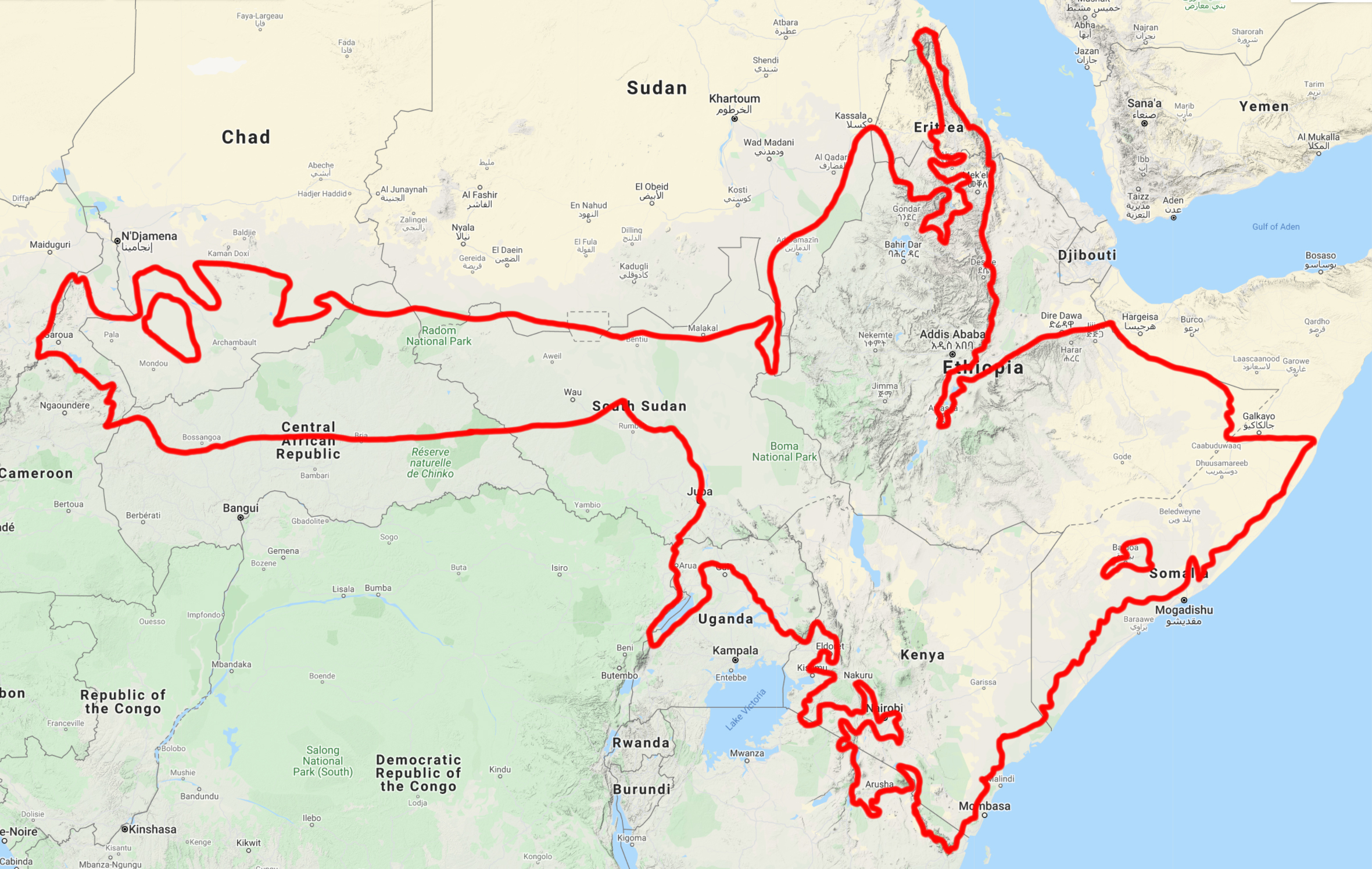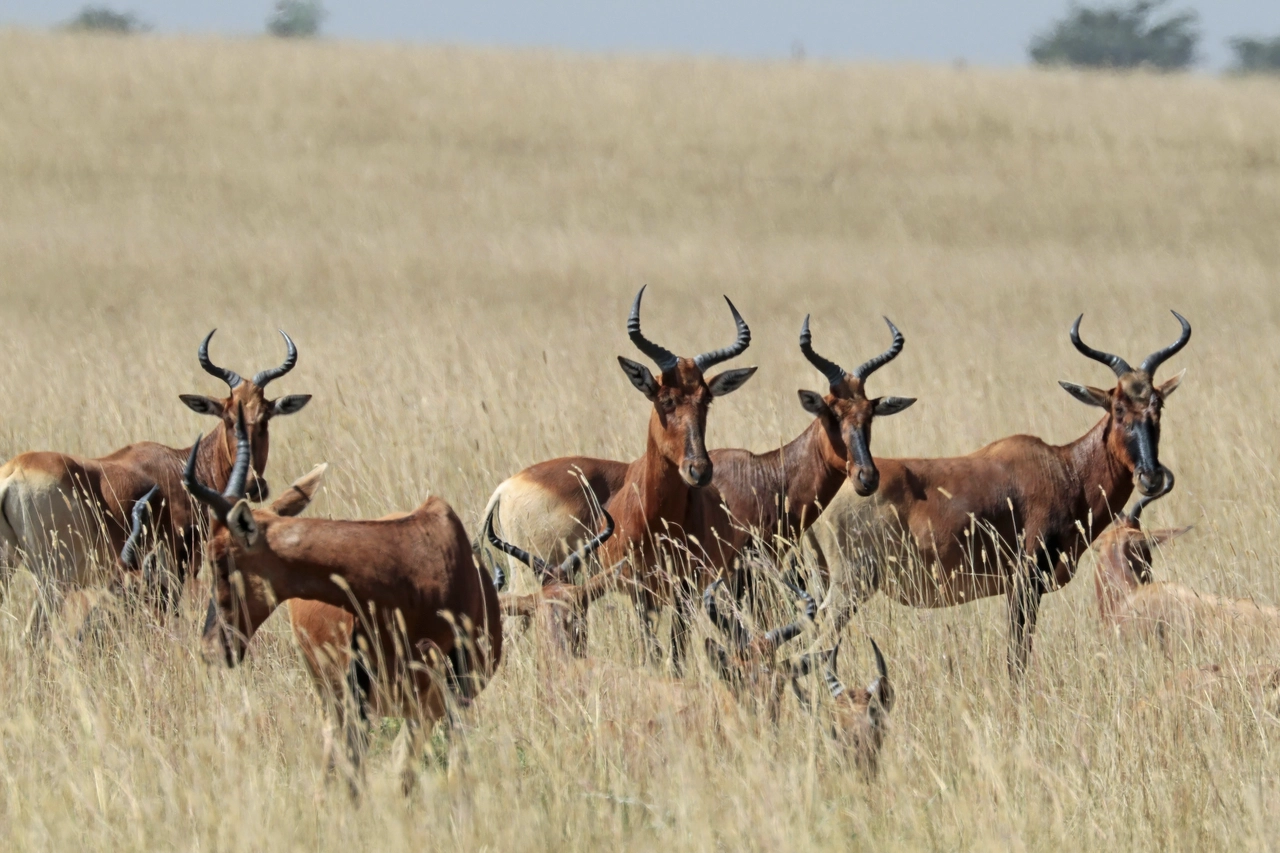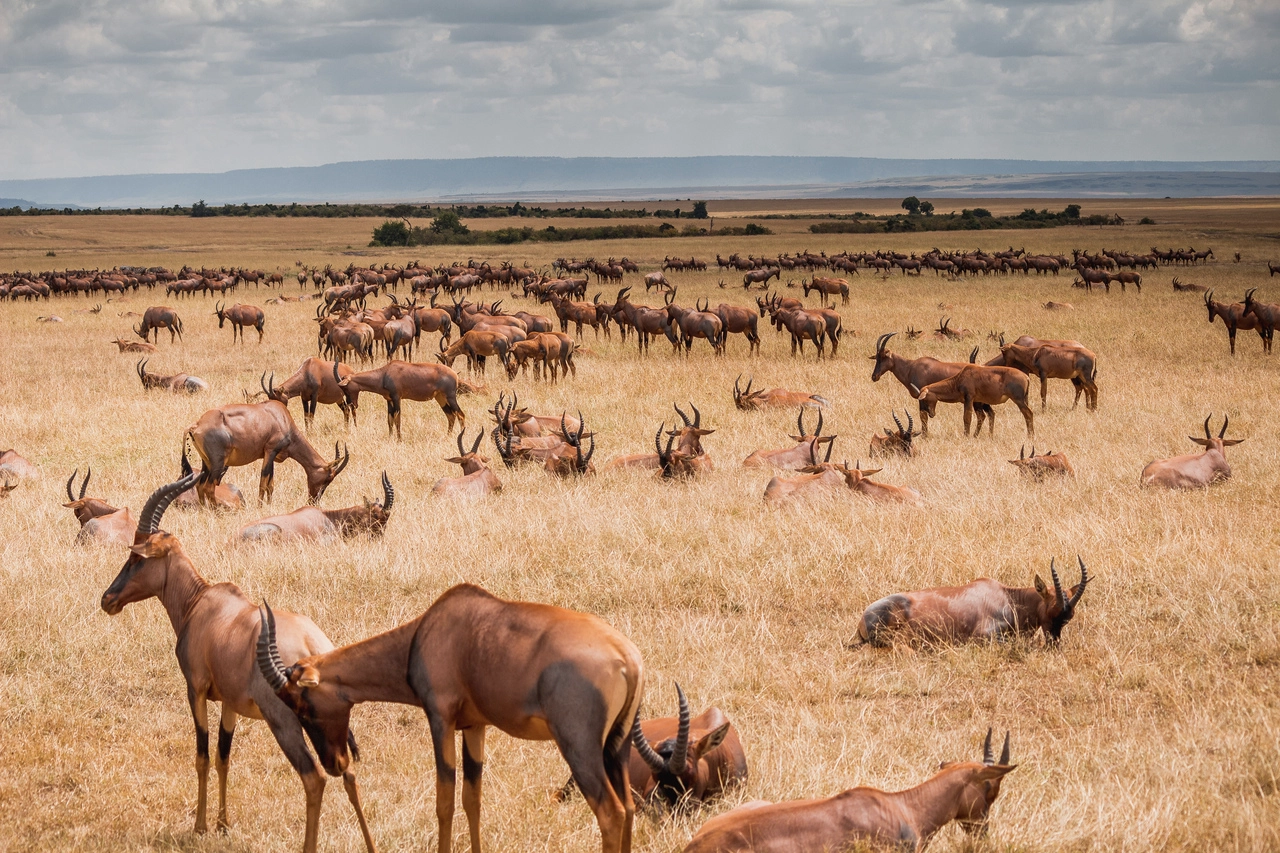Swayne's hartebeest: how a community is working to save a rare antelope
One Earth’s “Species of the Week” series highlights the flagship species of each of the 844 unique ecoregions contained within Earth’s bioregions.
The African savanna is famous for its keystone species such as elephants, wildebeests, lions, and cheetahs. In certain conditions, however, it’s lesser-known species that help the ecosystem thrive.
During extreme wet and dry spells, the Swayne's hartebeest feasts on short grasses, pruning the area for the mild season. Yet, they are on the verge of extinction, and a local-led effort is working to save these essential grazers from disappearing for good.

Swayne's hartebeests are the flagship species of the Somali Acacia-Commiphora Bushlands and Thickets ecoregion, located in the Lake Turkana-Sudd Grasslands, Bushlands & Forests (AT21).
One of the eight species of hartebeest, Swayne's hartebeests are distinct with their dark brown coat. A large antelope, they stand 1 meter (3.3 ft) at the shoulder and weigh between 100 to 200 kilograms (220 to 440 lb).
Both sexes dawn spiraled, grayish-black horns that can measure up to 45–70 centimeters (18–28 in). Their horns are primarily used to ward off predators, but males also use them to establish dominance during the breeding season. The clashing of Swayne's hartebeest horns is so loud that it can be heard from hundreds of meters away.
Unique from other hartebeests and grazers in their habitat, Swayne's hartebeests prefer grasslands during the intense dry and wet seasons. Short grasses of no more than 30 centimeters make up their diet, and they prefer burned patches.

This makes the Swayne's hartebeest essential to its ecosystem as their grazing helps vegetation grow into full booms in milder seasons, which helps feed the rest of the savanna’s inhabitants.
Once widely distributed throughout the Horn of Africa, Swayne's hartebeest lived in herds of 20 to 300 individuals. However, due to overhunting and habitat loss, only 70 Swayne's hartebeests remained in 1992.
Known as the qorkey to the Oromo people, traditional leaders, called Aba Gadas, came together to raise awareness and protect Swayne's hartebeests.
They created guidelines for their communities to follow that ended the hunting of hartebeests for food, declaring it went against their customs as stewards of nature.
The Aba Gadas now work with the Senekele Swayne’s Hartebeest Sanctuary, one of the few wildlife sanctuaries in Ethiopia and one of only two places where Swayne’s hartebeests can be found.

To keep the hartebeests safe from becoming a food source, the sanctuary educates locals on the essential role the animal serves in maintaining the grasslands healthy and permits people to harvest the remaining dried grasses not eaten by the animals.
Over 10,000 people acquire grasses from the harvest as it is split between 57 community groups. They use the grasses to build houses, make ornaments, or sell for profit.
According to the Aba Gadas, as livelihoods become more secure through these profits and awareness spreads, the community is beginning to understand the necessity of Swayne’s hartebeests, and the sanctuary’s popularity is increasing.

A 30-year record was broken in 2018 as 88 Swayne’s hartebeest calves were born between January and May alone. In 2019, it was estimated that 850 hartebeests lived in the sanctuary along with 191 bird and 36 mammal species.
Swayne’s hartebeest may still be an unfamiliar animal to much of the world, but as Oromo and their work demonstrate, education about species and their role in their environment is key for conservation success.
Awareness, along with community involvement and providing sustainable resources in conjunction with conservation efforts, can bring a species back from near extinction.
Interested in learning more about the Afrotropics bioregions? Use One Earth's interactive Navigator to explore bioregions around the world.
Launch Bioregion Navigator.jpg?auto=compress%2Cformat&w=1440)


